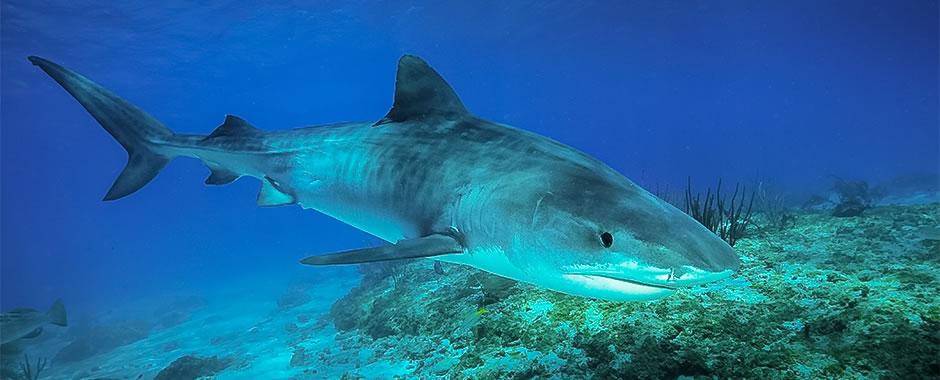Habitat
As a group, sharks are adapted for a wide range of aquatic habitats. Various species inhabit shallow coastal habitats, deep-water ocean floor habitats, and the open ocean.

Distribution
Elasmobranchs inhabit tropical and temperate seas as well as some cold and polar seas and freshwater lakes.
- Sleeper sharks (Somniosus spp.) stay in the chilly Arctic waters all year round.
- Bigeye houndsharks (Lago omanensis) have been found at the bottom of the Red Sea some 2,195 m (7,200 ft.) deep.
- Bull sharks (Carcharhinus leucas) can survive extremely well in fresh water. They have been known to travel 1,609 km (1,000 miles) up the Mississippi River to the state of Illinois until locks and dams blocked their path. They are still found in fresh water areas like Lake Nicaragua, Lake Ysabel in Guatemala, the Zambezi River in Africa, the Tigris River in Iraq and 255 km (160 miles) up the Atchafalgya River in Louisiana.
Migration
Shark migration is poorly studied.
- Not all species migrate. In species that do migrate, the distance may be quite long. Through tagging studies, a blue shark (Prionace glauca) was found to have swum 4,344 km (2,700 miles) in four months.
- Food availability, environmental cycles, or reproductive cycles probably determine most migrations. Females of many species migrate to specific locations to lay eggs or have pups.




